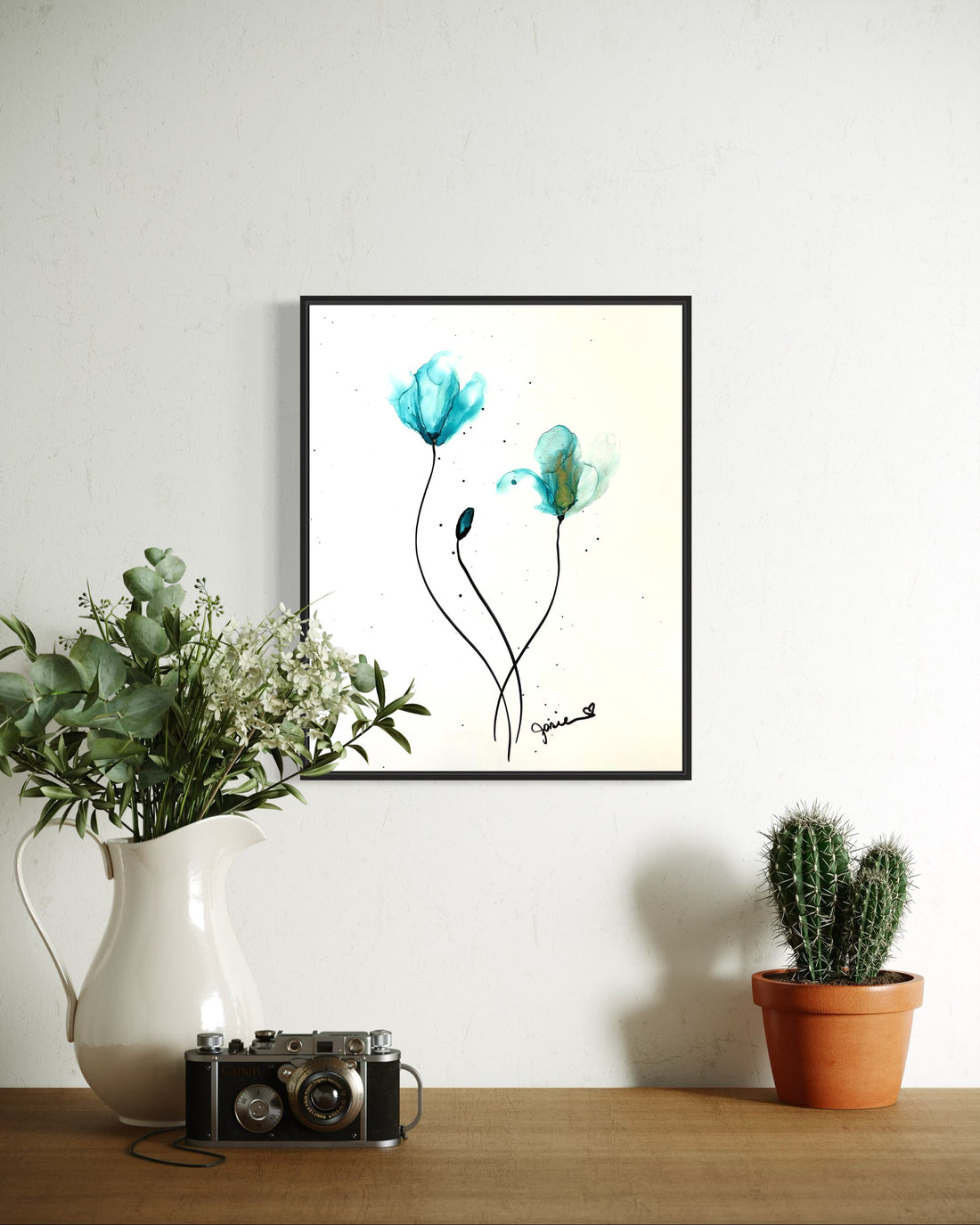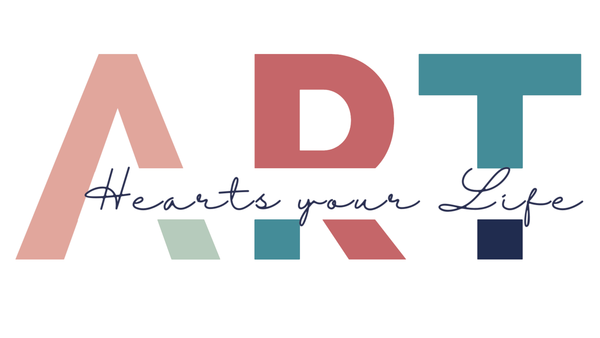
The 7 Essentials for Creating Stunning Alcohol Ink Art on a Budget
Getting started with alcohol ink doesn’t have to be expensive. While high-end supplies are great, you can still achieve stunning results using budget-friendly alternatives. Whether you're just testing the waters or want to keep your costs low, here’s a list of the seven must-have supplies—and a few smart swaps—to help you create beautiful alcohol ink art without breaking the bank.
1. Alcohol Ink (At Least 3 Colors)
Alcohol inks come in many brands, but you don’t need a full set to begin. Start with three colors that blend well together, such as a primary color set (red, yellow, blue) or a harmonious trio (like teal, purple, and pink).
💡 Budget Tip: Tim Holtz Ranger Alcohol Inks are an affordable alternative for beginners.
- Price: ~$12 set of 3
- Link: Ranger Tim Holtz
✨ My Favorite Choice: Kamenskaya alcohol inks—they come in packs of four, and the colors are rich and bold!
- Price: ~$25 for a set of 4 (15 ml each) Base-A-Line
- Link: Kamenskaya Alcohol Ink Set
2. Isopropyl Alcohol (91% or Higher)
This is an essential ingredient for diluting and blending your ink. 91% or higher is recommended because lower concentrations contain too much water, affecting the ink’s movement. Blending Solution is also a premade alternative to isopropyl alcohol that some artists prefer for smoother blends.
💡 Budget Tip: 91% isopropyl alcohol is easy to find in pharmacies and stores at a low price.
- Price: ~$4 for 16 oz
- Link: You will easily find it in pharmacy
✨ My Favorite Choice: I prefer 99% isopropyl alcohol, which I buy in bulk on Amazon.
- Price: ~$10 for 16 oz
- Link: 99% Isopropyl Alcohol
3. Brush
A simple brush is useful for adding details, moving ink intentionally, or softening edges. A basic synthetic brush works just as well as professional ones.
💡 Budget Tip: Get affordable synthetic brushes from dollar stores or repurpose an old makeup brush.
- Price: ~$5 for a set
- Link: Synthetic Brushes Set
✨ My Favorite Choice: I just use an old brush and keep it only for alcohol ink. I prefer a fine-tip brush for details.
4. Dust Blower or 400-Watt Air Dryer
To achieve signature flowing effects, you’ll need a way to move the ink. A dust blower gives controlled airflow, while a 400-watt air dryer helps push the ink for softer blends.
💡 Budget Tip: Use a straw or the cool setting on a hairdryer (though high heat can dry the ink too fast).
- Price: ~$5 for reusable straws
- Link: Reusable Straws
✨ My Favorite Choice: I use both the dust blower and the Conair 400W air dryer—they work great together. I don’t use a straw because I get dizzy!
- Price: ~$10 for a dust blower, ~$30 for the Conair 400W dryer
- Links: Dust Blower, Conair 400W Hair Dryer
5. Synthetic Paper or Non-Porous Surface
Alcohol ink requires a non-porous surface for proper movement. Options include:
- Synthetic Paper (e.g., Nara, Yupo, Pixiss) – Best for vibrant, smooth blending.
- Glazed Tiles or Glass – Great for making coasters or functional art.
💡 Budget Tip: Glazed tiles or laminate sheets (without laminating anything inside) are good alternatives.
- Price: ~$0.25 for 4x4 glazed tile
- Link: Find them in home improvement store
✨ My Favorite Choice: Nara paper—it gives the best results and holds ink beautifully.
- Price: ~$10
- Link: Nara Synthetic Paper 9x12 pack of 10
6. A Fineline Applicator or Small Cup for Mixing Ink
A Fineline applicator lets you add ink precisely, while a small mixing cup is useful for diluting colors before applying them.
💡 Budget Tip: Empty dropper bottles or pipettes can be used instead of a Fineline applicator.
- Price: ~$10 for two Fineline applicator
- Link: Fineline Precision Applicator
✨ My Favorite Choice: I use a Fineline applicator bottle instead of an ink pen because it doesn’t roll around!
7. Protective Gloves
Alcohol ink stains hands and nails, and prolonged exposure to isopropyl alcohol can dry out your skin. Wearing nitrile gloves is a simple way to keep your hands clean and protected.
💡 Budget Tip: Disposable nitrile gloves are inexpensive and come in bulk.
- Price: ~$10 for 100 gloves
- Link: Disposable Nitrile Gloves
✨ My Favorite Choice: I use reusable nitrile gloves—they last longer and help reduce waste.
Important Safety Note
Always read the labels on all your supplies before using them. Alcohol ink and isopropyl alcohol produce fumes, so work in a well-ventilated room. If you're sensitive to strong odors or working for long periods, wear a VOC-protective face mask. Isopropyl alcohol can cause headaches, so take breaks and ensure proper airflow while creating. Your health and safety come first!
You can find those mask online here
When you're just starting with alcohol ink, the focus should be on having fun, learning new techniques, and discovering how the ink moves. That means you don’t need to invest in every fancy tool right away!
However, here are a few things that can enhance your experience
- Silicone Mat or Protective Surface – Makes cleanup easier but a simple plastic sheet or parchment paper works just fine.
- Apron – Alcohol ink stains skin and clothing, but it washes off over time. If you're worried about stains, these can help!
- UV Spray or Varnish – Used to protect finished pieces, but in the learning phase, you’ll likely be experimenting more than sealing final artworks. Learn more about the varnish in the alcohol ink starter guide you can download it on this page.
💡 Remember: Your learning phase is about playing, exploring, and seeing what works for you! You don’t need everything at once—just the basics and a willingness to experiment.
Ready to Start?
With these seven essentials, you can start creating alcohol ink art without breaking the bank. Want to take your skills further? Join my 5-Day Alcohol Ink Challenge, where I’ll walk you through techniques, composition tips, and creative exercises—all with budget-friendly supplies in mind!
